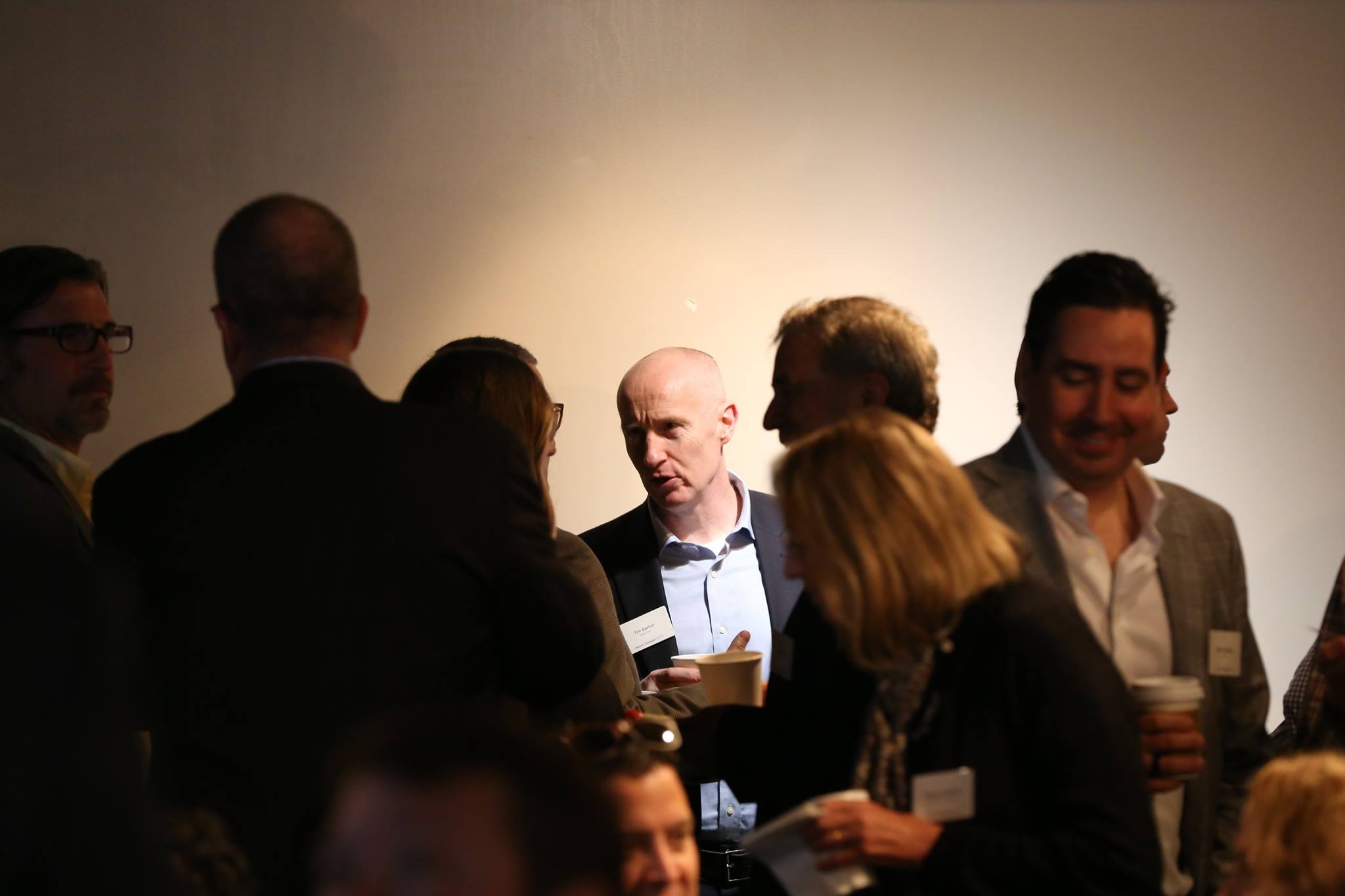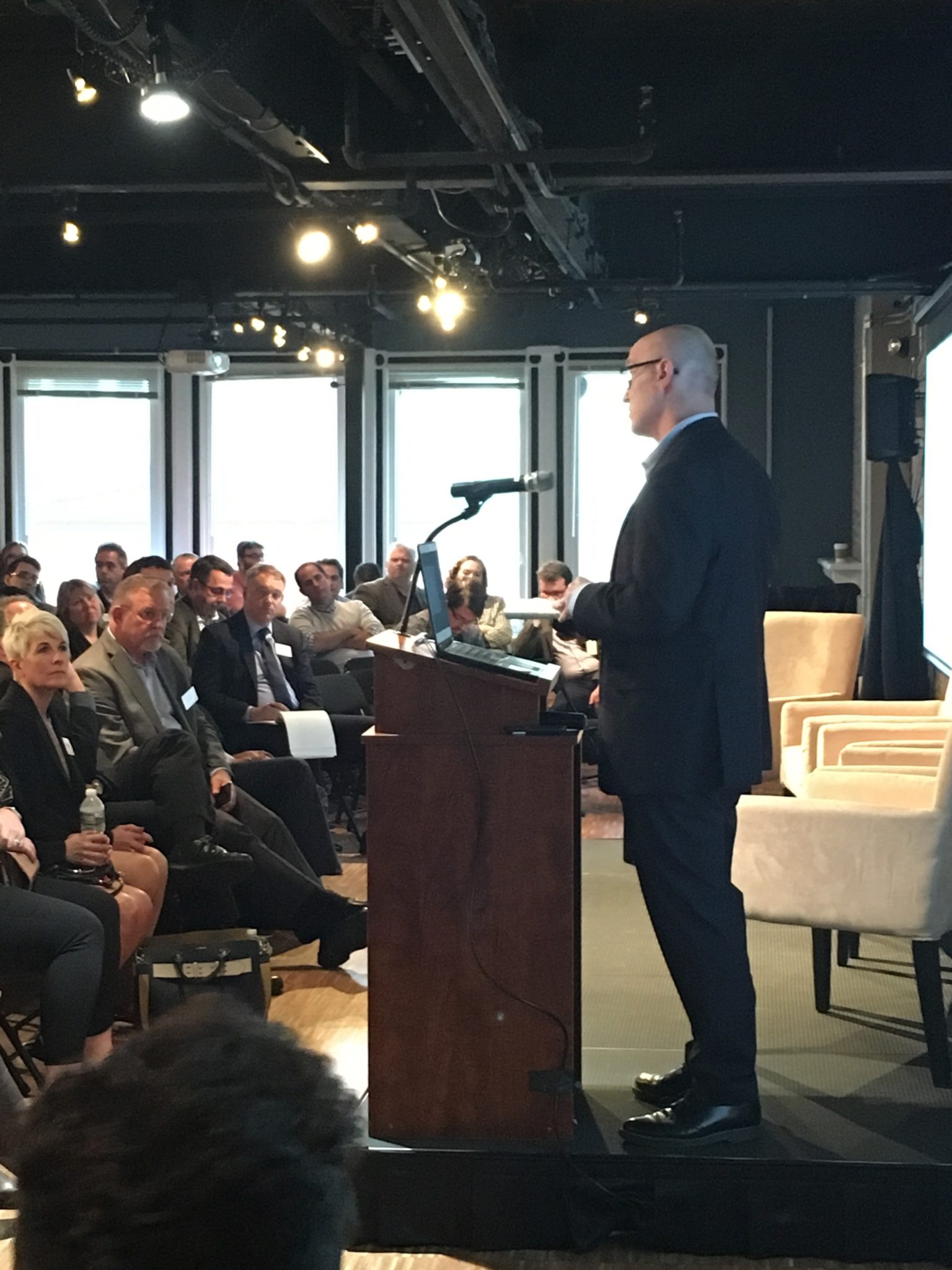
In our opening panel of Technology Leadership, Max Gabriel stated that he didn’t have a platform strategy: ‘I don’t have one’, he said, ‘I have a platform dilemma’. It is my sincere hope that the day and a half of discussions hosted in DC went some way towards turning attendees’ platform dilemmas into platform strategies.
Silverchair is in the business of effectively distributing high quality content. We normally do so via our platform, and it’s been great to be part of doing it face to face at Platform Strategies. I think we managed to pack in a lot of high quality content during that time.
Silverchair put on Platform Strategies for a number of reasons. Key among them was placing us at the heart of the community and debates around publishing platforms. We wanted to provide an event where people could come together and learn, and we did it because we also wanted to learn. I am sure each of us at the meeting took different things away from the sessions. Below I have shared some of what I have learned and taken away.
- I learned about the Knoster model, which gave me a new way to engage with change in an organization;
- I learned that ‘heroes hide the complexity’ and ‘don’t scale’;
- I learned to ask whether you have a co-existence model or co-ownership model in your organization, and that you only find out which you have when something goes wrong (who owns and imparts the blame?);
- I learned that technologists talk about culture more than I was expecting, and more about flexibility. That they are asking critical questions about how much of what they do is table stakes vs competitive: ‘why bother if it’s not competitive’ one of our panelists asked.
- If I were a sacred cow I would be making my way towards the exit, since everyone is questioning them, if not sending them straight to the slaughterhouse. One of my Silverchair colleagues put it like this: ‘A set it and forget it strategy is no longer viable. The ever changing line of commodity tech vs competitive tech needs to be reassessed every few years, turning solved problems over to expert partners’;
- I liked the concept of sneaking R&D into projects;
- There was an emphasis on the long-term cost of ownership, but also the view expressed that tech lock in should not be top of mind because it’s now so much easier to swap out baseline tech;
- I was taken with the idea that ‘the job of a leader isn’t just to accumulate political capital, you also have to spend it’;
- I learned some life lessons as well as professional ones: what you bring attention to, flowers. And that it’s human nature to underestimate complexity;
- Our speakers talking about unified platforms emphasized the importance of taxonomies, controlled vocabulary, and semantic tagging to drive search and discoverability;
- I learned that it does in fact only take two hours to build an omniformat site using Silverchair tools – which was a relief since that’s what I’ve been telling customers. But I learned too that the Silverchair tool experience can be improved;
- I left the meeting knowing more about customer experience, about how ideas happen, and how we are heading for a world made up of speaking and reading, with the phone even more at the center of people’s lives. Those were some of the explicit lessons from the mobile session; implicitly it was also a contribution to the ‘buy, build, or partner’ conversation that took place in the first session: by demonstrating the deep knowledge that comes with partner specialization.

I finished the end of Day 1 feeling like I was keeping up; however, Day 2 began with yet another demonstration in a long list of how much smarter than me other people are. And we were made to do a little math at 9 o’ clock in the morning!
- I learned about the power of TDM to make apparently even naturally disagreeable geologists agree;
- And I was cheered by the validation that Silverchair’s long-term focus on semantic technology and taxonomical development was continuing to position us well in solving clients’ needs and users’ problems: whether things like distinguishing between 13” and 15” beagles, or achieving a massive increase in poster session engagement at an academic conference;
- I was cheered too that Silverchair’s recent focus on developing a new TDM layer felt validated. But also that maybe we should be making more of these things, and investing further in them;
- The Education session was valuable, as we at Silverchair think more about this space, and it was interesting that the conversation focused less on platforms and technology, and more on overcoming organizational boundaries and silos;
- I learned that search and discoverability was not as mature a part of the ecosystem as I had previously thought;
- It was good to see the confidence that at least the larger not-for-profits represented on the final panel have about their organizations not just surviving but thriving, even if those organizations had been described as dry cleaners, and can still do better. One of the ways that they might do better is through honing their skills on the consumption side. And what would a panel made up of smaller societies and publishers have made of the scale/survival dynamic?
In fact, I would say that, if we were looking to decide who ‘won’ the meeting, I’d say it was the user, or at least efforts to move forward by putting the user at the heart of our business. And users whose expectations are forever more demanding, and often set outside our industry.
A meeting like this takes a huge amount of work and goodwill from many people. So I’d like to finish with some heartfelt thanks:
- To our speakers: thank you for the great content, engagement, and Q&As;
- To our moderators: planning the content with the speakers and making the sessions go well, is a skilled job. Thank you for doing is so well;
- Finally to the attendees: thank you for being such an engaged crowd, and for all the questions.